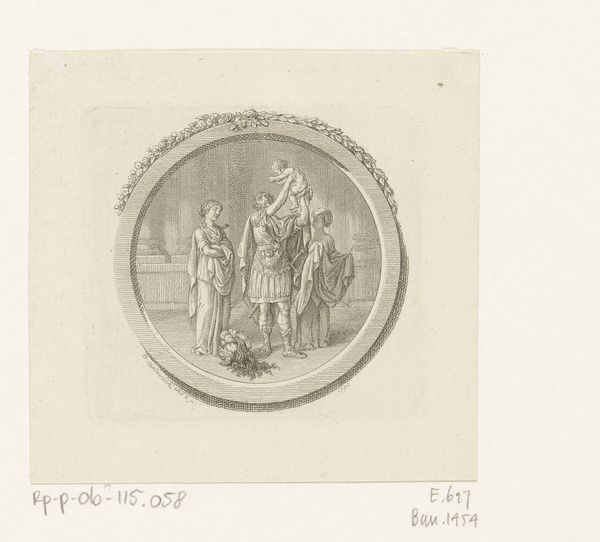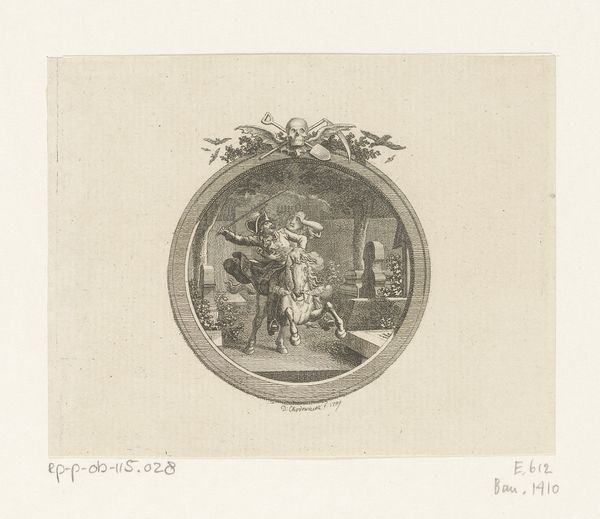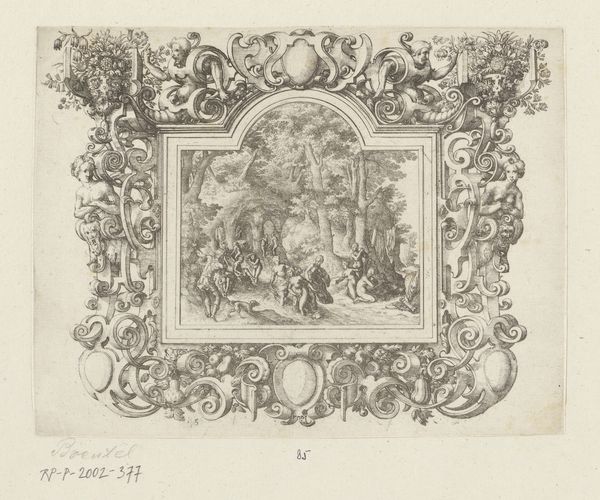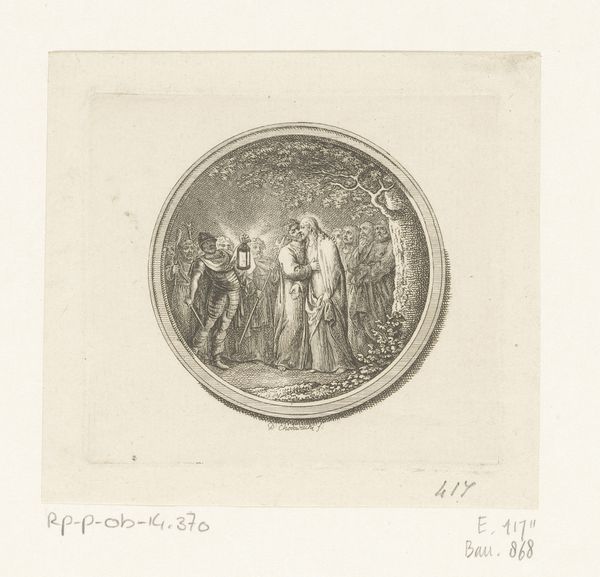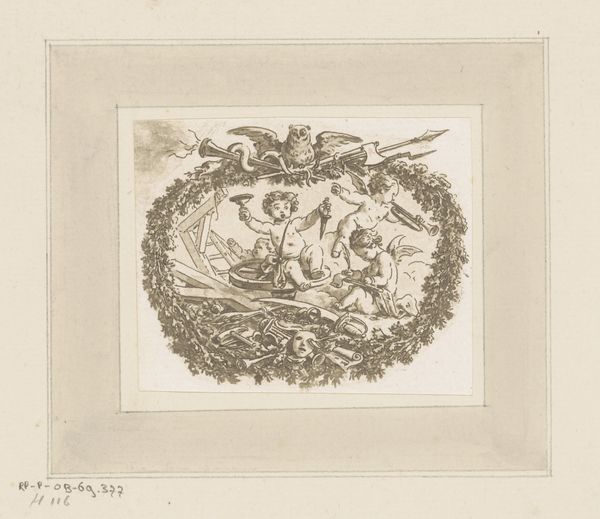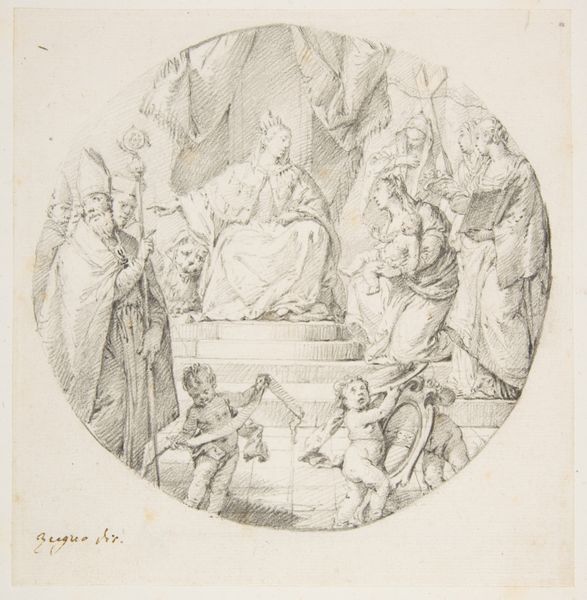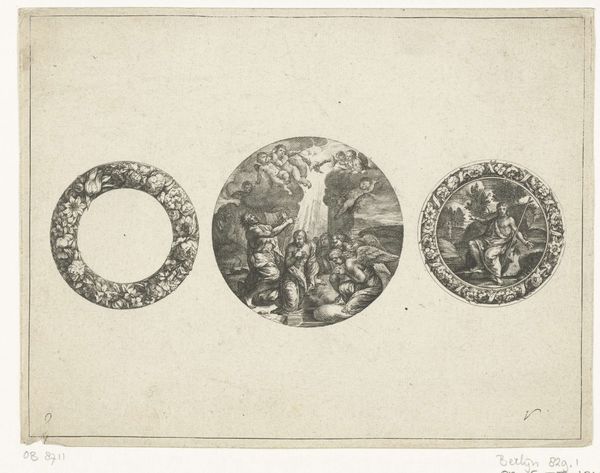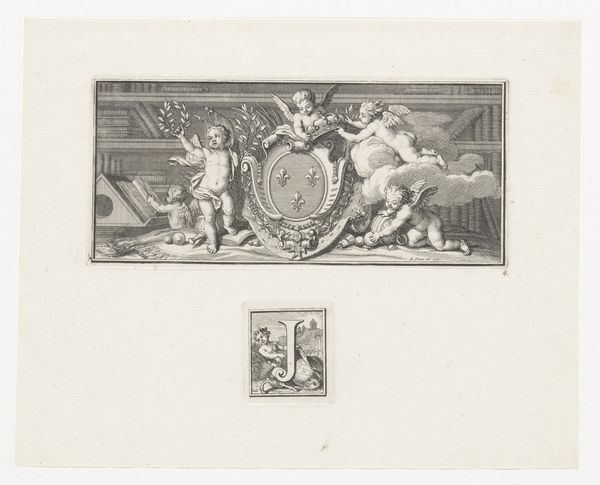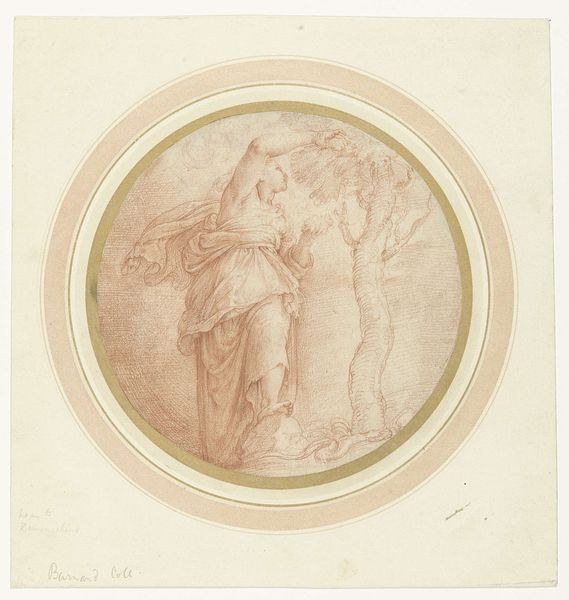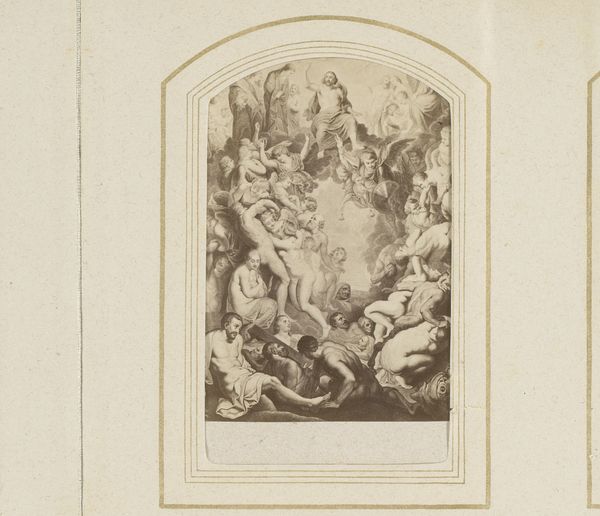
Dimensions: height 65 mm, width 70 mm
Copyright: Rijks Museum: Open Domain
Daniel Nikolaus Chodowiecki made this tiny engraving, Walpurgisnacht, sometime in the late 18th century. It's a scene of witches, devils, and other figures from folklore gathered together in a circle, a popular theme in European art for centuries. Chodowiecki was working in Berlin at a time when the Enlightenment was challenging traditional beliefs about religion and the natural world. This image can be understood as part of a broader cultural debate about the nature of superstition and the role of reason. The visual codes and cultural references would have been easily understood by his contemporaries. For example, the presence of owls, bats and hybrid creatures are all associated with the realm of night and hidden knowledge. To better understand this artwork, it would be helpful to consult historical texts on witchcraft and folklore, as well as studies of the Enlightenment in Germany. Art is always a product of its time, and our understanding of it deepens when we consider the social and institutional forces that shaped its creation.
Comments
No comments
Be the first to comment and join the conversation on the ultimate creative platform.
